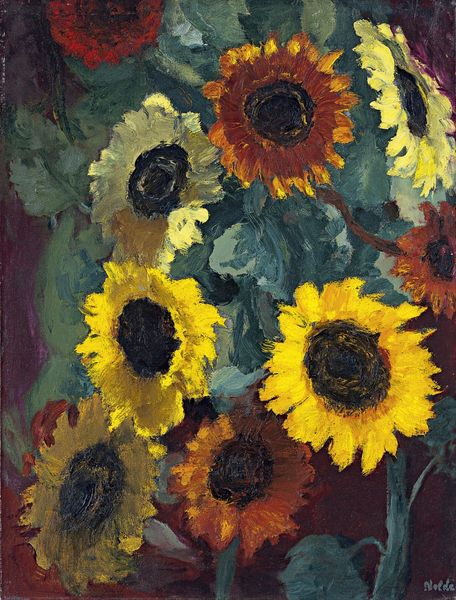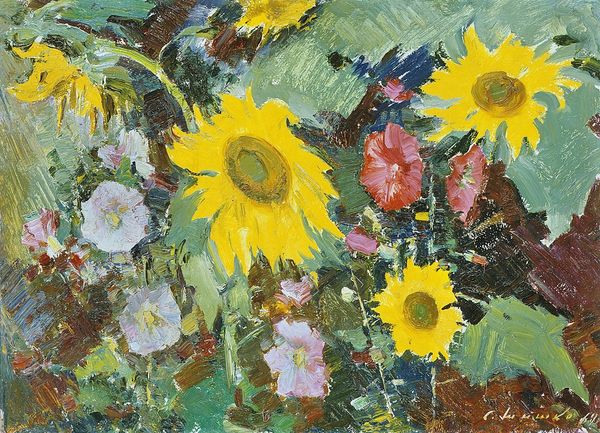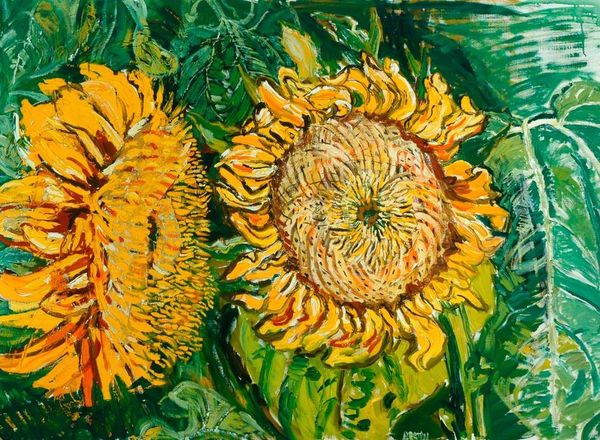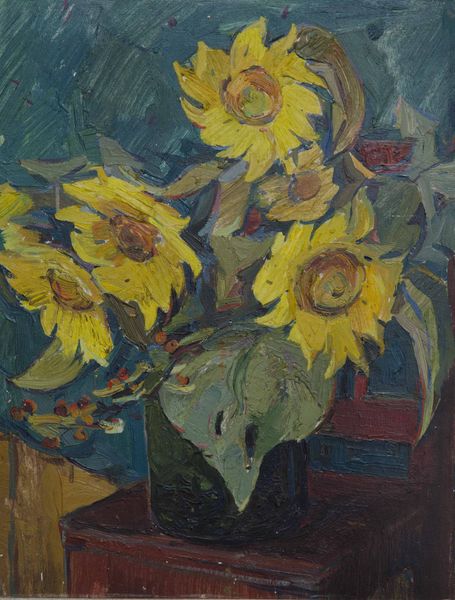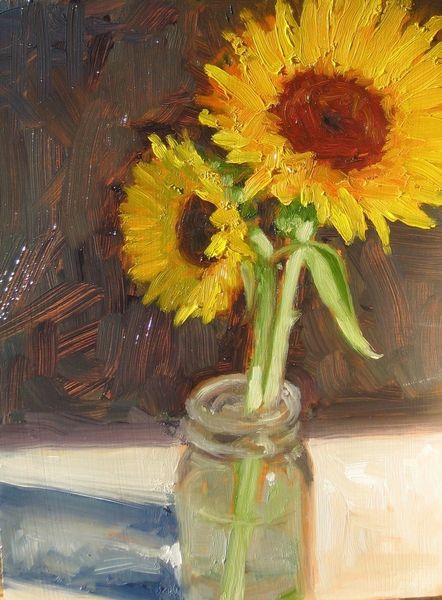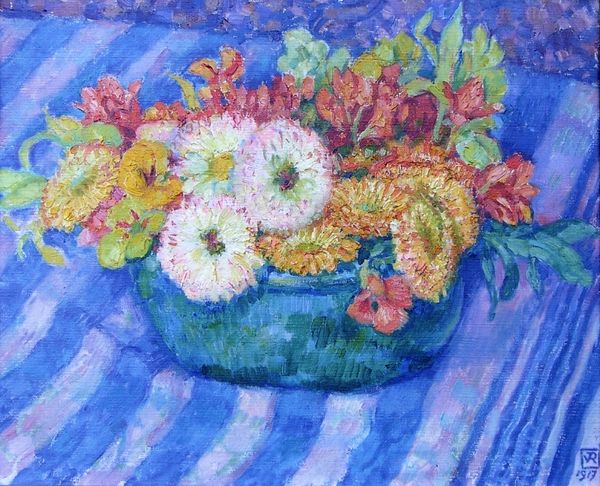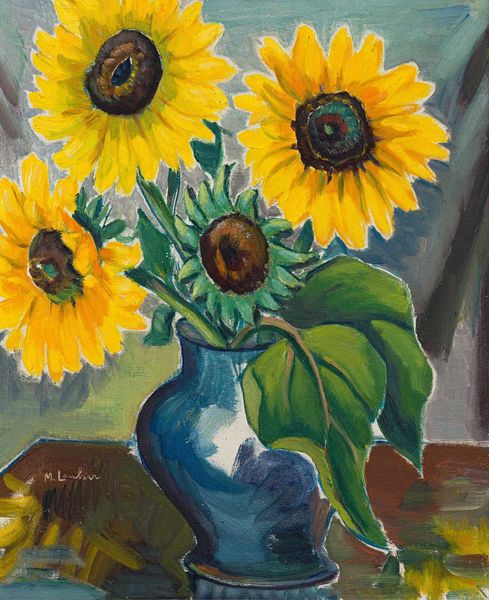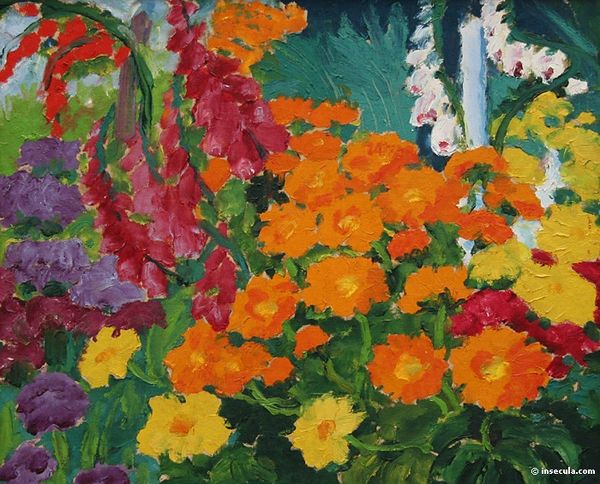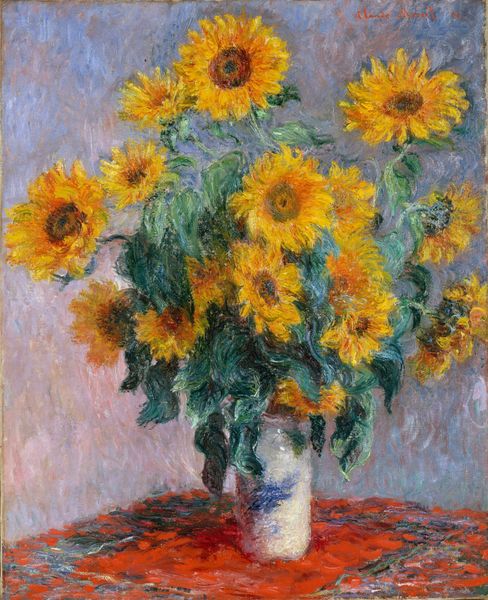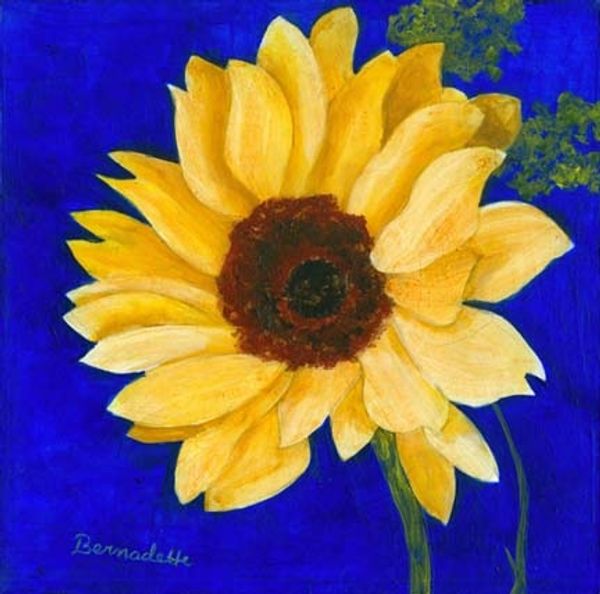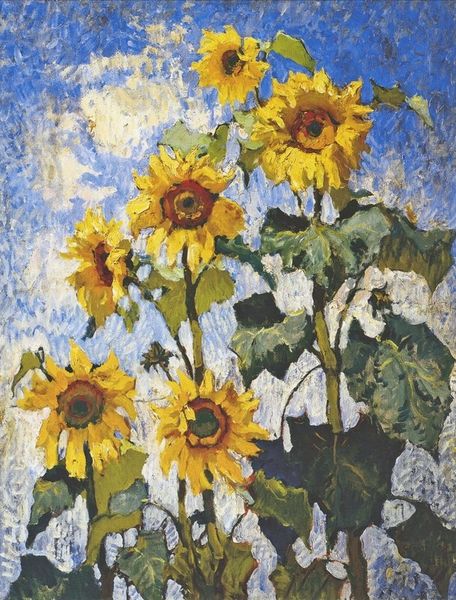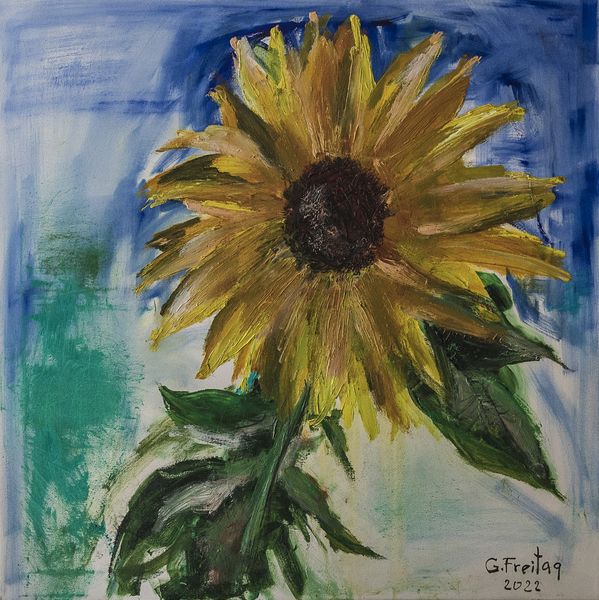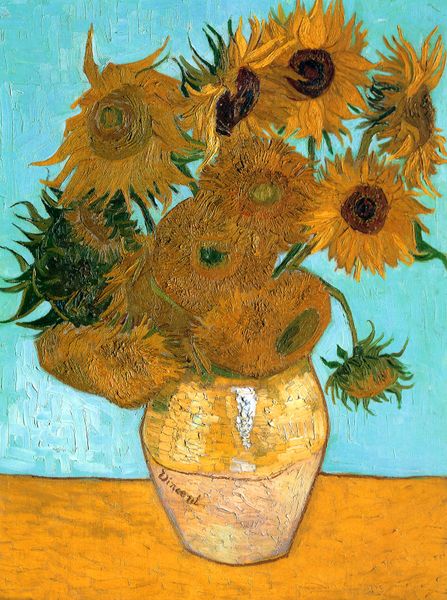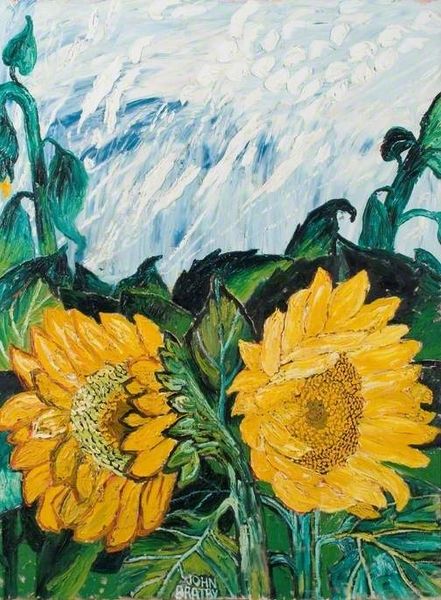
painting, oil-paint
#
painting
#
oil-paint
#
flower
#
german-expressionism
#
plant
#
expressionism
#
naive art
#
expressionist
Copyright: Emil Nolde,Fair Use
Editor: This piece is a painting called "Sunflowers" by Emil Nolde. The medium appears to be oil paint, and it strikes me as having quite an intense, almost jarring energy through the color contrasts. What catches your eye when you look at it? Curator: Immediately, it's the interplay between complementary colours. The yellows of the sunflowers themselves aggressively challenge the surrounding blues and greens. Notice how Nolde’s impasto technique emphasizes the materiality of the paint, drawing attention to the surface itself rather than illusionistic depth. How does that physicality impact your reading of the artwork? Editor: Well, it definitely makes it feel less… delicate. More forceful, I suppose? The thickness gives them a almost a 3D feel, they burst forth at the viewer. Curator: Precisely. It eschews traditional notions of beauty in favour of an assertive, almost confrontational aesthetic. Examine the structural tension between the rounded forms of the sunflowers and the more angular strokes defining the leaves and stems. Do you see how that disjunction creates a sense of unease? Editor: I do now that you point it out. It feels less like a harmonious composition and more like a collection of clashing shapes and textures fighting for attention. Almost intentionally not pleasing, which is quite bold. Curator: Precisely! Nolde subverts our expectations. It's less about accurately depicting sunflowers and more about exploring the expressive potential of paint itself. Through formal analysis, we discover how Nolde disrupts conventions and prioritizes visceral impact above representational accuracy. Editor: It is interesting how breaking away from convention can create a unique style and elicit new understandings through shape and colour. I appreciate the new lens to understand Nolde’s intention through the structural use of shape, colour, and texture! Curator: Indeed! A focus on materiality unveils new ways of looking and invites unique reflection and critical discourse.
Comments
No comments
Be the first to comment and join the conversation on the ultimate creative platform.
